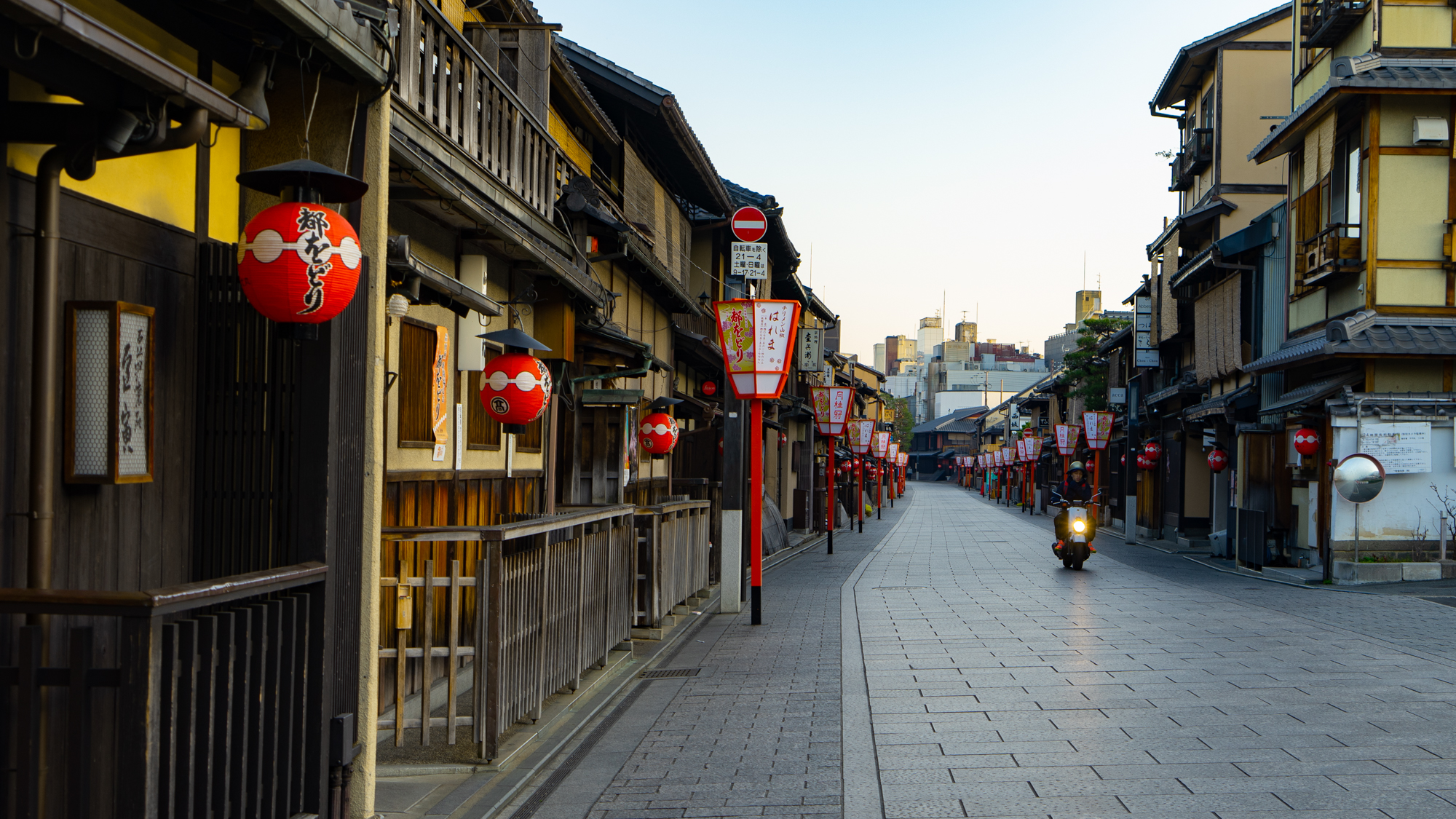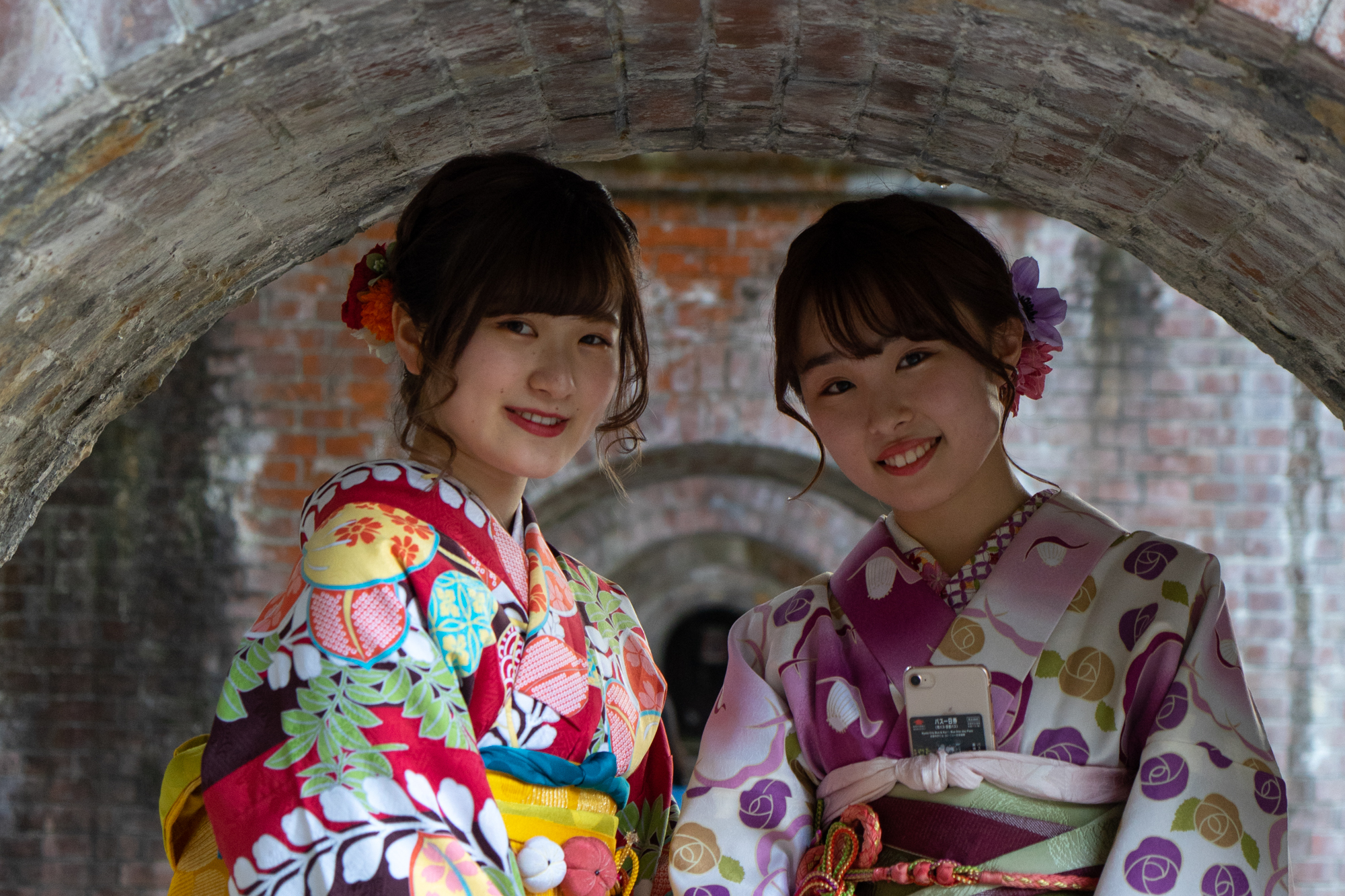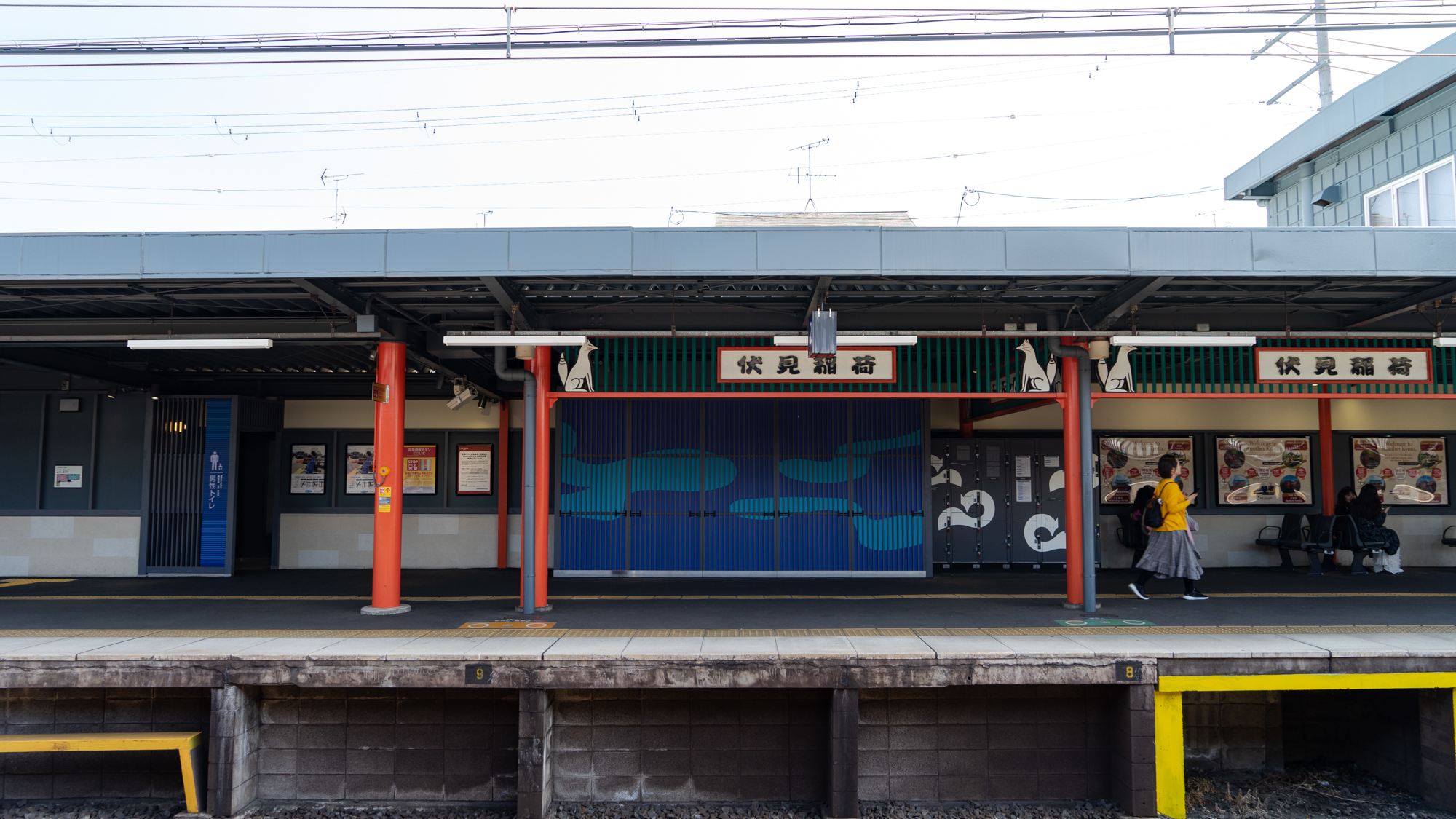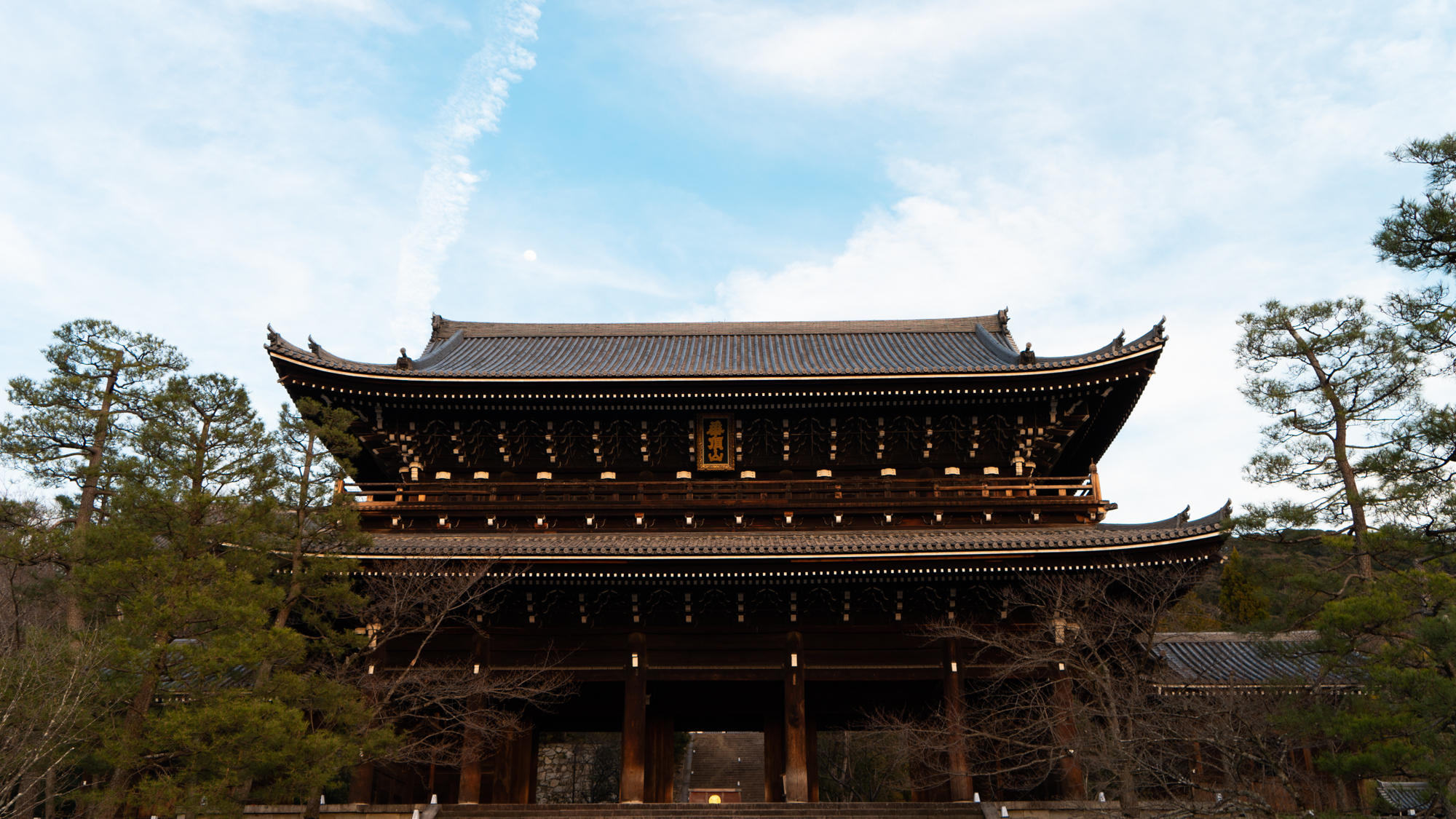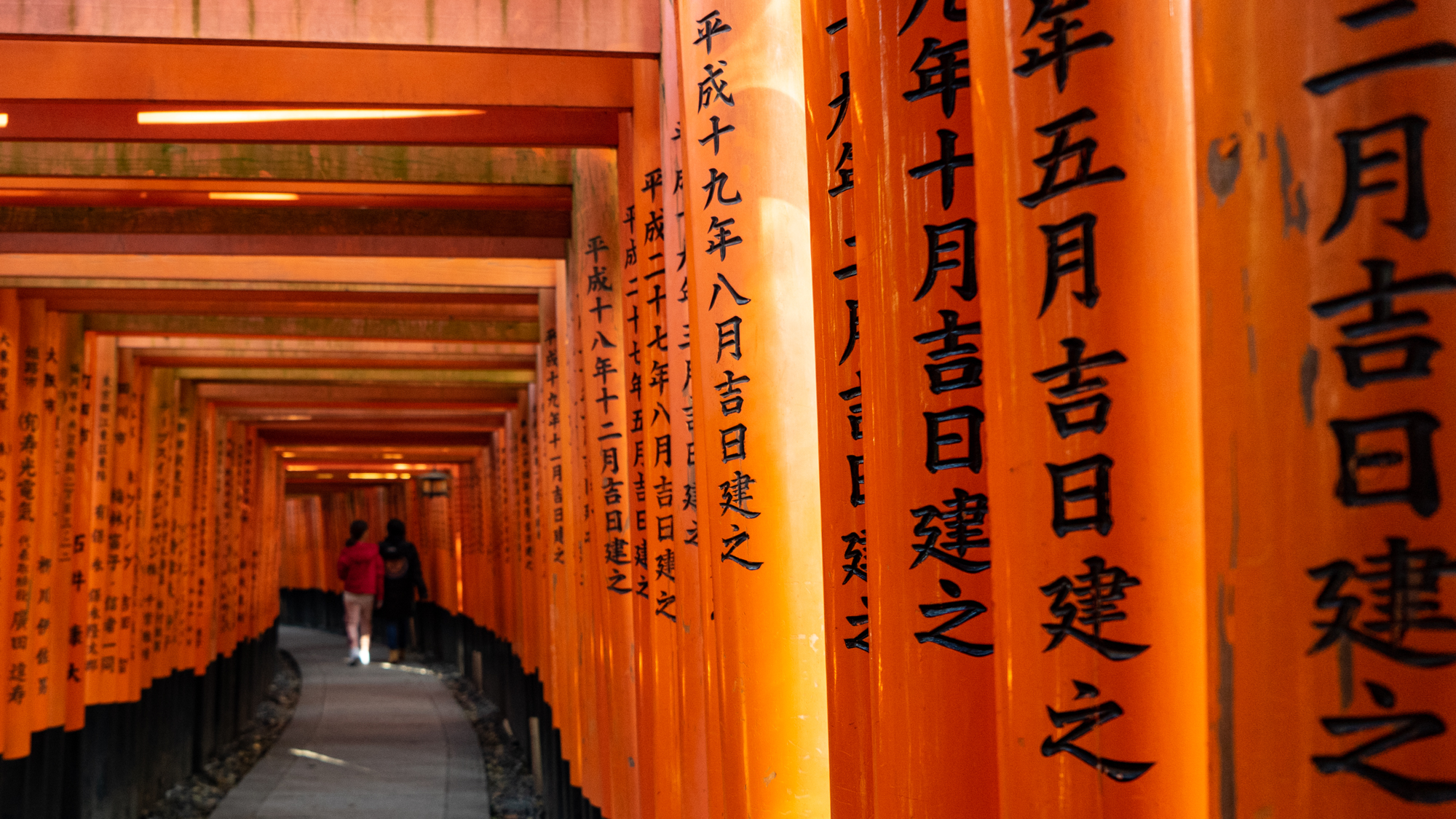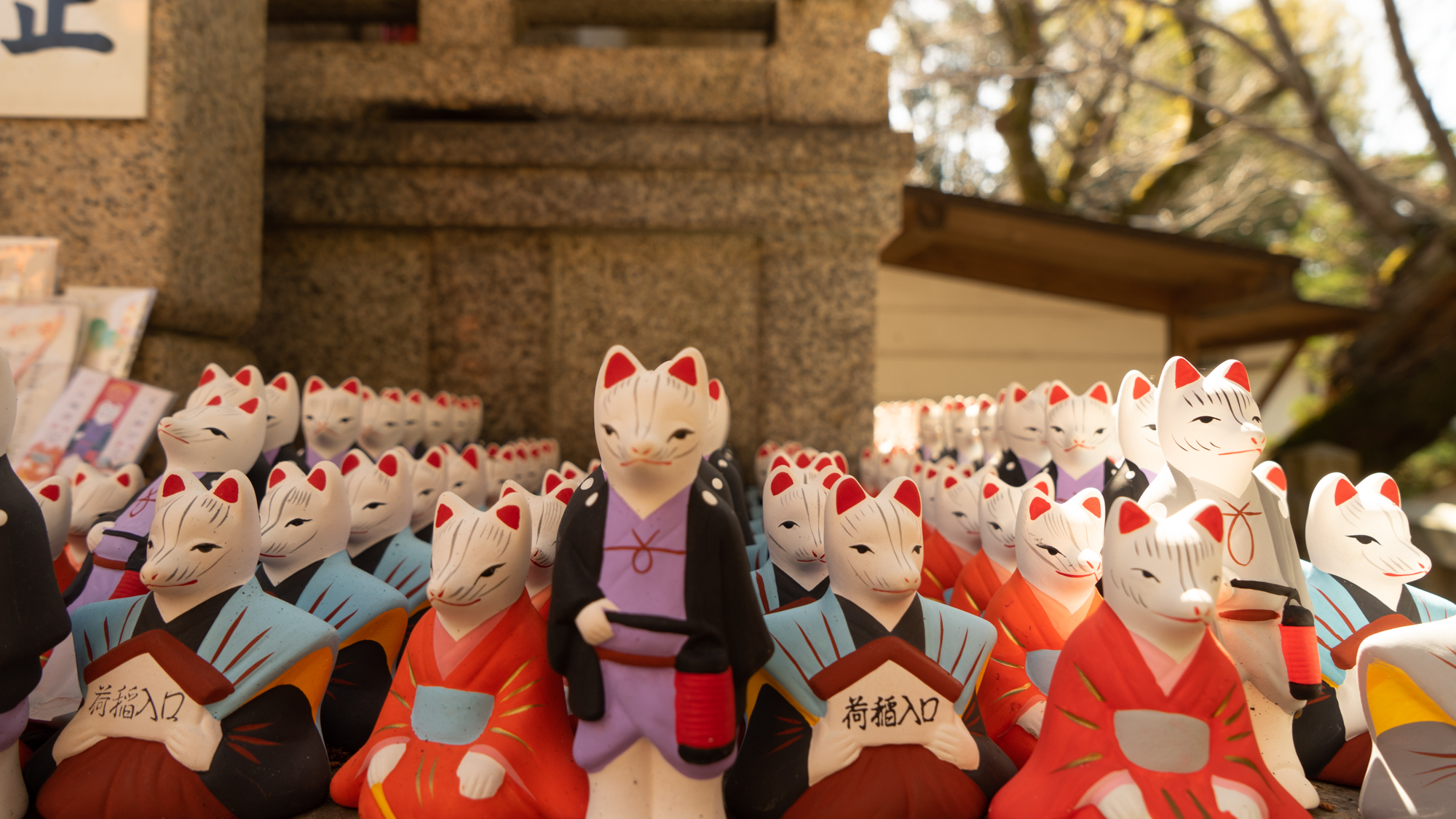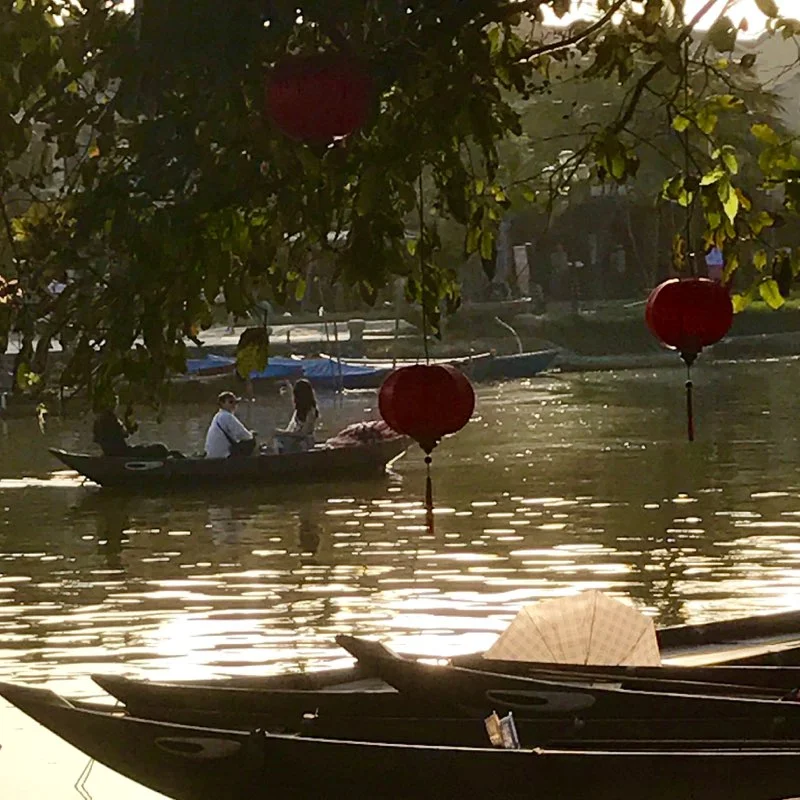Boasting more temples, shrines, and Buddha statues than one can ever visit in a single trip; Kyoto, Japan’s ancient imperial capital, serves as the country’s cultural and spiritual center. After a few whirlwind days in Tokyo, Kyoto was a welcome contrast, a quieter, more walkable city steeped rich in tradition with incredible sights, wonderful restaurants, hotels, and shops. I spent countless hours researching this trip, and though we had a whirlwind few days, we obviously couldn’t do everything on our list, leaving many things unchecked for a future trip. Here are some of the highlights to help you experience some of the best things to do in Kyoto.
Tripper Tips:
Ideal time to visit: Both spring and fall have its delights, and though we enjoyed the hint of spring in March and saw a few cherry blossoms buds starting to bloom we’d choose to revisit in the fall. Green hills surround Kyoto, and autumn colors would be a perfect backdrop to the city's magnificent temples. In comparison, the winter can be quite cold while the summertime is generally hot and humid.Impressions: The fine details in Kyoto stand out, from each exquisite sake cup to the intricate gift-wrapping of our purchases to our taxi drivers’ white gloves. Some may say you can see everything in a day or two, but they are missing the point, only seeing the city as a checklist of sights to see. To me, the real joy of discovering Kyoto was walking and wandering with no agenda, pausing for a cup of matcha at a teahouse, stopping at a store that caught our eye, or discovering a small shrine that appeared out of nowhere as we turned a corner. Kyoto is a layered city that reveals itself slowly, quietly, and it would be a shame to rush through on a been there done that itinerary.
Logistics: Take a very early bullet train from Tokyo to maximize your day. Though Tokyo station is vast if you have your taxi drop you at the entrance to the Skiansken, it's easy to find your track. My travel agent booked us a reserved seat in first class, and though lovely, the extravagance was not necessary. (A reserved seat, however, is vital to guarantee a place, during busy times the non-reserved carriages do fill up.) The train is just under three hours; we were on a 9 am and at our hotel just after noon.
Stay: We divided our four-night stay between two very different hotels. The first, The Celestine, is a lovely boutique hotel with a fantastic location in Gion, the historic Geisha district and in my opinion Kyoto's most atmospheric area. Our room, a mix of traditional Japanese style with contemporary touches, was small but exceptionally well designed and comfortable. Do not miss the Celestines' fantastic breakfast buffet. Skip the western items, as the Japanese selections were first rate, especially the corn tempura and shrimp and rice with tea broth. Hands down, this was our favorite breakfast during our two-plus weeks in Japan. Our last two nights we moved to The Ritz Carlton, also in an ideal location on the Kamo River and near some of Kyotos best shopping. This Ritz gets lauded with tons of praise, some going as far as stating that it's the best hotel in Japan. And, yes, it lives up to its hype, delivering first class service, and fantastic style and design. Our room overlooking the river was picture postcard worthy and luxe. But at more than three times the price of the Celestine was it worth it? The Ritz is a fantastic hotel for sure, but it was filled with Americans while the Celestine was mostly Japanese and Europeans. If you prefer something more local and authentic, then book the Celestine. I'd stay there again on a return visit. Alternatively, friends loved their stay at the Four Seasons, but note it's further away from downtown and thus less convenient.
Authentic Stay: As we had just been to a Ryokan, a traditional Japanese Inn in the Niseko area we opted to stay at a hotel in Kyoto, but many people we know choose to stay in a Ryokan for at least for one night of their visit. Ryokans provide a uniquely Japanese experience, you sleep on tatamis mats, wear a Japanese-style robe called a yukata, trade your shoes for slippers and enjoy two meals a day during your stay: a multi-course kaiseki dinner plus a full traditional Japanese breakfast. There are many excellent choices in Kyoto with Tawaraya, considered to be the best though very expensive. Another top contender and right across the street is Hiiragiya. Friends stayed and loved the more realistically priced Shiraume in Gion, scenically set along the canal—one of the prettiest streets in Gion.
First Day Acclimation: Upon arrival at the station take a taxi to the Celestine, drop your bags and take off running. Across from the hotel is Kenninji, the oldest Zen temple in Kyoto, and one of its least visited, passed by as tourists tend to head to the more famous Yasaka Shrine. (The bright orange Yasaka shrine is also known as Gion Shrine) Kenninji is deserving of a quick look and is an excellent introduction to Kyoto's temples. Start with a peek at the Zen garden and then make your way to the main temple to see its incredible ceiling boldly decorated with black and white paintings of twin dragons—just amazing. Hungry? Head to Gion Tanto, a tiny restaurant that backs up to the canal—order the shrimp okonomiyaki and yaki soba—so good we thought of returning the next day. After lunch wander along the canal, the Shirakawa River is picturesque in spades, lined with machiya, the traditional wooden houses now converted into inns, restaurants, shops, and teahouses. Don’t miss Pass the Baton, part vintage store, part eclectic boutique, and with a hip teahouse that attracts travelers for their massive matcha kakigōri (shaved ice).
Afternoon: Now its time for some temples, so head from Gion (a 30 minute or so walk or quick taxi) towards the Higashiyama neighborhood where Temple Nanzen-ji, Ginkakuji Temple (known as the Silver Temple and one of the most famous and visited of Kyoto’s temples), and the Philosophers Path are all located. For us, a highlight of the afternoon was observing the steady stream of young couples and groups of young girls dressed in traditional ceremonial costumes posing for photos alongside the old train tracks adjacent to Nanzen-ji, and at the various temple grounds. You could start at either end as the Philosophers Path essentially links the two temples. We began at Nanzen-ji in awe of its impressive grounds and grand buildings and its Zen garden. A 5 minute or so walk brings you to the beginning of The Philosophers Path, a charming 2-mile stretch that runs alongside the canal lined with small shops, lovely tea rooms, small shrines, and architecturally interesting residential houses. Along the Philosophers Path and at Ginkakuji are great vantage points to view the cityscape.
Dinner: Gion is magical at night with all its red lanterns lit. As it's geisha territory, keep your eyes open, it's rare to experience a sighting, but you could get lucky. (We did!) We had a fun, lively dinner at Wabiya Korekido where highlights included juicy chicken yakitori skewers; balsamic lamb meatballs dipped in egg yolk, excellent grilled asparagus and mushrooms, and their signature white soup—a chicken soup that tasted like my grandma used to make.
Nighttime Stroll: After dinner, explore the picturesque alleyways and small streets in Gion before heading across the bridge to pedestrian-only Pontocho Alley. (The narrow lane runs parallel to the Kamo-gawa River.) There are restaurants and bars if you want to linger, and we felt like we stepped right into a Harry Potter novel; it's that enchanting.
Must Visit: Fushimi Inari-Taisha, is the most important shrine in Kyoto, famous for its thousands of orange torii gates. Go early, earlier than you think to beat the crowds, its well worth having the path of gates mostly to yourself. (It gets very crowded!) Another possibility is to go after dusk—the shrine is open 24/7, although the signs warning us of monkeys and wild boar scared us off from going back late night. We allowed for a 2-hour walk, turning back halfway at the Yotsutsuji intersection after observing lovely views of the city. (If you have more time you can walk to the top of Mount Inari, approximately a 4-hour round trip.) In addition to the striking gates, we found the sub-shrines and hundreds of fox stone statues within equally memorable.
To Market To Market: The Nishiki Market is one of Japans best markets, perfect for a fun grazing lunch. The covered outdoor space stretches for some six blocks in the middle of downtown with stalls and restaurants offering a taste of Kyoto's best with everything from sushi to tempura, seafood to snacks, noodles to mochis and so much more. We stocked up on various togarashi powders; the popular table condiment made up of an assortment of dried chili and other ingredients. Still hungry? The original, wildly popular Ippudo Ramen is located just a few blocks from the Nishiki Market or try the more unusual burnt ramen at Gogyo.
Special Dinner: Our meal at Nakajin turned out to be our favorite meal not only in Kyoto but also in all of Japan. Chef Kazuomi Nakamura is a soba and tempura master, and we were surprisingly the only two diners that night at his tiny 10-seat restaurant. How often do you get to have a special meal cooked right in front of you by the chef himself? Every detail was perfection-- from the organic vegetables and fish selected from that morning's market to the sake from Nakamura's friend's distillery; to the ceramic glasses and plates that the chef told us with a shy smile he made himself. Nakajin has a set menu, and as the chef speaks only a little English, you should communicate via your hotel concierge the day before if there is anything you do not eat. Every bite was better than the next, and the experience was something we won't soon forget. More Eats: Kyoto has many famous restaurants from full course gourmet dinners to casual noodle joints. Hyotei, Kikunoi and sister restaurant Roan Kikunoi are considered top tables to experience Kaiseki, the traditional multi-coursed, seasonal set meal, often served seated on tatami mats. For more contemporary Kaiseki book at Giro Giro Hitoshina. Good luck getting a table at Monk, located on the Philosophers Path, which could be a fitting end to a late afternoon or early evening stroll. Monk is an intimate spot featuring a fusion of Japanese, farm-to-table and pizza, it’s a hot spot so reserve well in advance. For sushi, we hear Sushidokoro Man is a good choice offering either omakase or an a la carte menu. Tempura reigns at Endo and Yoshikawa, and Nakajin as mentioned above. For Yakitori Hitomi is considered one of the best in the city. Looking for a soba or hot pot lunch head to Misoka-an Kawamichiya. For Udon, you can’t beat lunch at Omen where you dip the thick, wheat noodles in broth, served either hot or cold with seasonal veggies on the side. There are three locations throughout the city with one right off the Philosophers Path.
FYI: Kyoto is a city with strict no-show and cancellation policies. We had to fill out forms with the concierge's at both hotels before they would make our reservations. Also, many websites are in Japanese, making the whole process tricky and frustrating. I highly recommend securing your reservations before you go, in fact as soon as you have your dates as most places are tiny with only a few seats and popular restaurants get booked weeks in advance.
Sake Lesson: Admittedly ignorant about sake, we were schooled at Yoramu, an eight- seat sake bar, by its owner Yoram, an Israeli expat and sake expert who has called Kyoto home for 33 years. Here you can taste everything from unpasteurized sakes to 25 plus-year-old vintages that reminded us of a fine whiskey. We sipped three at a time, side by side to compare—a sake journey and an education. Don't be unnerved, Yoram is not the friendliest, even a little intimidating at first, but he is extremely knowledgeable, and it was an eye-opening experience into the complexity and depth of sakes.
Shopping: Bring Japan home with you whether its green tea from Ippudo or an engraved kitchen knife from Aritsugu, located in the Nishiki Market. We stocked up on incense sticks from Kungyokudo and beautiful handmade washi paper from Kamiji Kakimoto. On Teramachi Dori, Kyotos fun shopping street, is another paper institution Suzuki Shofudo where we bought tons of colorful laminated paper trays for gifts. (There’s another location on the Philosophers path) The department stores Daimaru, Takashimaya, and Isetan have amazing food halls and are must-sees either here or in Tokyo. We were in awe of the selection and the presentation-- the pure art of everything. In Gion stop by concept store Sfera to drool over the housewares.
Half day in Arashiyama: After the Fushimi Inari Shrine, The Arashiyama Bamboo Forest is one of Kyoto's most visited sights and for good reason: a walk through the grove is ethereal. It's an approximately 25-30 minute drive from central Kyoto; open 24/7 though Tenryu-Ji Temple within the forest opens at 8:30. Try and time your arrival for just after sunrise, before the crowds. At the top of the grove is Okochi-Sanso Villa, the former home of a wealthy Japanese actor with lovely gardens and views. Don't skimp on the ticket, it's well worth the fee, and includes a green tea and sweet in the teahouse. Afterward, head down to the Katsura River, for a stroll along the scenic bank. Another option is to take the 30-minute ride on the Sagano Scenic Railway, a retro train that runs along the river, allowing you to experience the area in a more leisurely fashion. Then if interested head across the bridge to the monkey park, inhabited by some 130 wild Japanese macaques. For lunch, grab a simple meal at one of the many noodle restaurants on the main strip or book a table at Shoraian, where friends raved about their tofu feast, served overlooking the water in a lovely room. After lunch we jumped in a taxi to the famous Kinkaku-Ji Temple, more commonly referred to as the Golden Temple, an approximately ten-minute drive. The impressive villa covered in gold leaf overlooking a large pond is as beautiful as its many photographs, and there is an impressive rock garden, but the crowds at the temple are a distraction, and we preferred our visits at some of the lesser-trafficked temples.
Sources: This is a great website we found while surfing the net, well written and chock full of useful information.
Note: As our trip was arranged at the last minute, we didn’t get the opportunity to visit Saihoji, also known as Kokedera, Kyoto’s famous moss temple. You need a reservation to visit the temple, which must be made well in advance by mail. Click here for more information.


